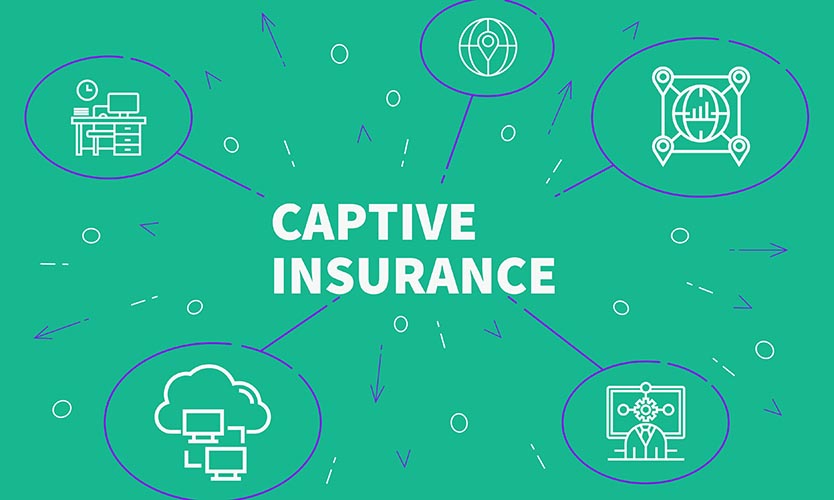Financial Guide For The Unemployed: How To Handle Job Loss
Cracks are starting to show in a job market that, on paper, still looks like it should be the strongest in a lifetime — posing real risks to the U.S. economy and Americans’ wallets.
Contributing to the uncertainty, the Federal Reserve is raising interest rates at the most aggressive pace in decades to cool red-hot inflation. That’s making it more expensive for businesses to borrow the money they need for financing new projects, expansions and jobs.
“Businesses and other entities facing the prospect or reality of reduced demand have cut workers or reduced their hiring plan,” says Mark Hamrick, Bankrate senior economic analyst. “So far, the epicenters of job loss have included the high-growth technology sector and the interest rate sensitive realm, such as finance and the housing market.”
Key statistics:
- Job cuts are more than 36 percent higher than they were at this time last year, with cost-cutting the most prominent reason, according to jobs data firm Challenger, Gray and Christmas.
- The number of Americans applying for unemployment benefits has grown by more than 57 percent since the week that ended on March 19, three days after the Fed’s first rate hike.
- Tech firms from Apple to Google have already announced plans to slow hiring amid the changing economic environment, while Robinhood and Shopify are cutting staff.
For the Americans who lose their jobs, unemployment can be devastating at both a financial and emotional level. Making matters worse, historically disadvantaged groups can find it even tougher to seek new employment opportunities or bolster their income amid long-running racial, gender and wealth inequalities.
While you might feel helpless in the face of major macroeconomic challenges, you can still take important steps to solidify your finances, boost your employability and stay afloat. Taking these 14 steps may help you get by amid job loss.
Tips to manage finances after being laid off
1. Take an inventory of your personal finances
Before making any major money moves, it’s important to first take stock of your individual financial picture.
The main questions to ask yourself right now are:
- How much liquid cash do you currently have access to, whether in a savings or checking account?
- How much money flows out of your wallet each month and where does it go, from utility and credit card payments to rent, mortgage and car loans?
Having an inventory of your finances lays the foundation you’ll need for taking every other financial step during a bout of joblessness.
2. File for unemployment benefits immediately
The moment you find out you’ve lost your job, immediately apply for unemployment insurance (UI), even if you’re not sure you’re eligible. The process can sometimes take three to six weeks from the time you file your claim to when you receive your payment. That wait can be even longer if your state’s agency has follow-up questions.
The amount you receive and for how long depends on where you live and how much money you earned when you were working, according to the Center for Budget and Policy Priorities.
- The average weekly benefit in the U.S. reached $398.87 in the first quarter of 2022, according to the Department of Labor;
- Jobless Americans can generally expect 26 weeks of unemployment benefits;
- UI replaces about half of an unemployed individual’s previous income;
But every state’s UI system is different. For example:
- Louisiana had the lowest average weekly payout of $207.01;
- Massachusetts had the highest average weekly payout of $578.72;
- Arkansas, for example, provides up to 16 weeks of regular benefits; and
- South Carolina and Missouri provide up to 20 weeks.
To be eligible for unemployment benefits, Americans generally have to be unemployed through no fault of their own. But in certain circumstances, you could still be eligible even if your employer fired you. Those could be:
- Not fulfilling the expectations of the job description; or
- Quitting your job for a valid medical or personal reason.
Most of the time, the burden of proof is on jobless benefit applicants at a claims examiner interview.
Check with your individual state’s unemployment agency for specific requirements, benefit payouts and information eligibility.
To file, you’ll need your Social Security number, driver’s license or state identification, mailing address, bank account information, along with proof of wages and employment.
3. See if you can utilize remaining employer benefits, including for health insurance
If your company will continue offering you some benefits during your period of unemployment, take it as crucial income.
For example, your company could offer a severance package, the total amount depending on your salary and how long you worked for the company. See if you can also use any unused vacation or sick days before officially departing and whether your employer might be willing to temporarily keep providing you health, vision, dental or other coverage.
“Companies are not obligated to keep paying for your insurance forever, but most employers will give you some kind of option to continue the coverage on your own for a period of time,” says Bruce McClary, senior vice president of membership and communications at the National Foundation for Credit Counseling. “Larger companies have benefits administrators available to answer questions. It’s certainly worthwhile to schedule some time with them to review your options.”
Any arrangement will likely have to be made between the employer and the employee. Severance pay, for example, is not mandatory in the U.S, according to the Fair Labor Standards Act.
4. Tap your emergency fund if you have one
Employer benefits and UI combined might not be enough to replace your lost wages. Now is the time to use any amount of cash you’ve managed to stash away. Experts typically recommend storing at least six to nine months’ worth of expenses for reasons like these, though it’s not usually an easy goal.
“It is a little like thinking to fasten one’s seat belt when entering a vehicle, because once an accident is in process, it might be too late,” Bankrate’s Hamrick says.
Finding the best place to keep your money will be crucial in making sure it lasts as long as possible — and serves you well. Keep your money in a liquid and accessible account, and consider housing it with an online bank that’s able to offer higher yields than traditional brick-and-mortar banks.
Finding ways to cut back on expenses will also be an important way to free up cash you can hopefully recycle back into your emergency fund, extending your income and helping you continue saving while you’re unemployed.
5. Rework your budget and eliminate any unnecessary expenses
While jobless, you want your income to last as long as possible. It’s a crucial time to carefully review your expenses and cut back wherever you can.
Easy cuts could include reducing your streaming services to limiting vacations, meals and entertainment away from home. Moving in with a roommate could help you by reducing your rent payment or adding another income stream. Depending on when you bought your home or your car, you might be able to refinance and lock in a lower rate.
6. If you need more money to stay afloat, consider temporary employment
Even if it’s not in your field, you might be able to work a temporary or part-time job to help boost your income while you work for something more permanent. A traditional temp agency might have options, along with other gig jobs from Uber and Lyft to Doordash and Instacart. Freelance opportunities might also be a valid form of employment — even better if those skills are transferable to your actual field.
7. Learn about what’s happening in the job market at both a local and national level
Keeping tabs on your industry’s job market can help you find the right opportunities.
State by state unemployment can be a crucial source to look at.
- Minnesota, Nebraska and New Hampshire in June had the lowest unemployment rates in the nation, at 1.8 percent, 1.9 percent and 2 percent, respectively; and
- New Mexico, Nevada and Alaska have the three highest unemployment rates of any other state, at 4.9 percent, 4.7 percent and 4.6 percent, respectively.
- The District of Columbia had the highest unemployment rate in the nation, at 5.5 percent.
That’s also true for looking at employment opportunities in specific industries. Nearly 9 percent of all jobs in health care and social assistance, as well as accommodation and food services industries are open, the two top industries, according to the Department of Labor.
Construction, however, has the fewest number of job openings of any other in the private sector, with just 4.2 percent of jobs open. Meanwhile, it also has the second highest layoff rate of any other industry, at 1.7 percent, the Department of Labor found.
Arts, entertainment and recreation had the highest layoff rate, the Labor Department found, at 2.8 percent of total employment in the industry.
Automotive, health care and products, as well as finance have been the top three sectors so far this year with the most job cuts announcements, with the most prominent reason being cost-cutting, Challenger, Gray and Christmas also found.
8. Network and pursue additional training
During a spell of unemployment, consider networking and pursuing additional training to increase your employability — especially if you work in one of those industries with higher layoff rates. Word of mouth is a valuable way to find out about an open position, and you might limit the competition by applying before it hits the market.
“If you’re really struggling with networking, use the interview to expand your network,” says Donnie Carpenter, CFP, Texas-based president and owner of First Move Financial. “You can always ask, ‘Do you know anybody else who’s hiring or a company I might be a good fit for?’ Now, you’ve got a warm connection instead of a cold call.”
If you discover tough times are likely still ahead for your industry, maybe it’s time to consider pursuing additional education or switching fields altogether.
“If there’s no other pathway back to gainful employment with the skill set and education you currently have, then it almost seems like there’s no little choice but to go and enroll in a skills training program or go to college to get you where you need to be,” the National Foundation for Credit Counseling’s McClary says.
9. Think carefully before turning to credit cards, personal loans or retirement accounts
You very well might need more money to make ends meet while you’re unemployed, but it’s important to weigh the pros and cons.
Astronomic interest rates on credit cards and personal loans could put you even more behind in the long run, especially if you end up being unemployed for longer than you originally thought. Even worse are payday loans, which sometimes come with an interest rate as high as 400 percent.
Taking money from your retirement accounts — what experts often refer to as “borrowing from yourself” — is another option, though you’ll want to pay attention to the fine print. You might have to pay income taxes on the money you withdraw, as well as a 10 percent early withdrawal penalty if you’re younger than 59 ½ years old when you take those funds out.
You can withdraw your contributions to a Roth IRA at any time without incurring penalties or paying taxes. Another option could be a 401(k) loan. You’ll likely have to pay an interest rate 1-2 percentage points above the prime rate, but you’ll also be able to pay back any amount of money you take out.
As with utilizing any retirement account, it’s worth keeping the opportunity cost in mind.
“You have to think about the consequences,” McClary says. “What are you trading in return for instant access to the money you set aside for a secure financial future?”
Additional assistance and resources
10. Notify the financial firms you regularly pay a bill to
Utility companies and financial institutions offered jobless individuals anything from forbearance periods to payment plans during the coronavirus pandemic. But Americans might not realize that institutions regularly offered those programs to hard-hit consumers, even absent the global pandemic, McClary says.
One example: If Freddie Mac owns your mortgage, you’re able to reduce or suspend your mortgage payments for up to 12 months while you’re unemployed.
When you compile your financial inventory and make note of everyone you regularly pay a bill to, inform all of the lenders and financial institutions about your situation. They might have programs that can help. The trick is just to ask; you don’t have anything to lose.
11. Take advantage of local charities, food pantries and nonprofits
If you’re looking for extra help, it’s worth researching services in your local area. Perhaps a nearby church could provide meal assistance. Maybe a local charity has hardship grants to help you with rent or your mortgage payment. Nonprofits could also be a valid resource, including credit counselors (such as the National Foundation for Credit Counseling, where McClary works) who can provide professional advice on how to best handle your finances during a period of unemployment.
12. See if you’re eligible for federal programs
Jobless Americans might be able to take advantage of the Supplemental Nutrition Assistance Program (SNAP), though there are restrictions.
If you’re unemployed, older than age 18 but younger than 50 and have no disabilities or dependents, you might have to participate in a work program to claim three months of SNAP benefits every three years, depending on where you live. Your unemployment benefits and income from any part-time or temporary jobs would also count toward your eligibility.
As with unemployment benefits, the best rule of thumb is to apply, even if you’re not sure you’re eligible.
13. See if you’re eligible for Temporary Assistance for Needy Families (TANF) funds
Another option is the Temporary Assistance for Needy Families (TANF), a federally funded, state-run program assisting low-income families on everything from food, housing and home energy to child care and job training. Contact your state’s office for information on eligibility and how to apply for benefits.
14. Find the best option for health insurance
If you work for a private company with at least 20 employees, you’re generally able to continue using your same insurance usually for up to 18 months. That option, however, can sometimes be pricey, with individuals at times required to pay the entire premium for coverage, though it can’t exceed the full cost of coverage, plus a 2 percent administration charge.
Price check with other coverage on the market, including through the Affordable Care Act’s Health Insurance Marketplace. Depending on your family size and income, you might also be able to take advantage of free or discounted health care through Medicaid.
Bottom line
A bout of joblessness can cause severe anxiety, but it’s important to focus on what you can and cannot control. High inflation, recession fears and a slowing economy are not things you could prevent, no matter how much you want to. What you can do, however, is prepare a game plan — and long before you know it’s going to officially happen.
Take solace in the fact that you have options available to you, and above all, remember what First Move Financial’s Carpenter says: There’s no shame in being jobless. It can happen to anyone.
“When I started sharing with people that I’d lost my job, almost every single person had a similar story from at some point in their life,” says Carpenter, who faced three months of unemployment during his own career. “There was no stigma to it at all; the stigma was entirely coming from me. Once I opened up about it, people were willing to share resources. It helped financially as well as emotionally.”









